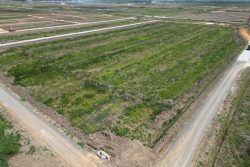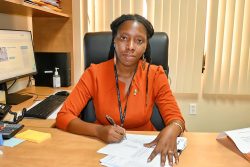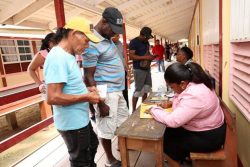Bengal Village, Corentyne has started to attract notice because of Bengal Aromatic Rice which has hit the market locally and will soon reach Trinidad. The aromatic rice is Guyana’s answer to the popular Basmati rice which is grown in India and Pakistan.
Whereas other villages usually have Dutch or English names, ‘Bengal’ was given its name by the Indian immigrants who were presumably allocated land there at some point after their indentureship contracts ended, and who decided to call their village after the region in India from which they came.
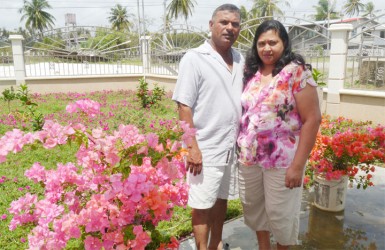
his wife, Rebecca
With a small mixed population of just 300, Bengal has been developing commercially and has a chemical shop, meat centre, grocery store and an internet café. However, three gas stations that had kept the village busy have been closed. This notwithstanding, as a consequence of the investment of large-scale rice farmer Leekha Rambrich, 51, the owner of Rambrich Enterprise, it is also positioning for further development with the establishment of a state-of-the-art rice mill, a gas station, a pharmacy, and a fast food outlet.
Bengal is a rice-growing area and it was evident that the rice harvesting period was in full swing with agricultural machinery very much in evidence. In one section, a group of men were spreading paddy that was being slowly deposited by a truck, along the roadway.
Paddy was also spread neatly in a government-funded drying facility. Another truck was parked nearby as a grain cart discharged paddy into it.
Apart from that, the village was “peaceful and quiet” and the residents friendly and accommodating. They were also described as “hard-working” and in almost every yard there was a kitchen garden. Residents described themselves as happy that Bengal was “one of the few villages that don’t have a rum shop.”
When this newspaper visited the area a few days after Easter, eight-year-old Weston Johnson was flying his kite on vacant land. The kite collapsed to the ground and he ran to pick it up and posed for a photo.
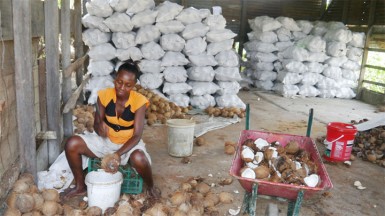
Some farmers had gone to the backdam to harvest their paddy. Motielall Dhuman, 39, who farms on 75 acres, had also started to harvest his crop. He had another portion which needed water but was having a hard time sourcing it. There was not enough in the trenches for him to pump into the field. He had to “look for water at three different places and instead of finished pumping one day it takes three days and cost a lot more money,” he said.
He sat on his tractor while his brother filled the tank with diesel as they prepared to head to the backdam to start pumping. Their young sons were also waiting to go for the ride with them.
He finds that the industry is “getting tough” because the cost of production keeps going up and the paddy price for this crop had dropped.
Dhuman, a father of four who lives with his family at his parents’ home is also thinking of diversifying into cash crop and aquaculture.
Nearby, Richard Campbell who works at the National Insurance Scheme office at Port Mourant was busy in his yard servicing one of his motorcycles. He is new to the village, having moved from Liverpool with his wife and son a few months ago. He likes living there and described Bengal as being quiet and safe. “I don’t have to worry about thieves here. I could leave my motorbikes in the yard and nobody would trouble them. Certain areas you can’t do that; you have to keep them under lock and key.”
Plant diseases
Agronomist, Vako Ghansham was at work in a chemical shop belonging to Sattie Sukhram.
The shop is always busy because of the many rice and cash crop farmers in the area.
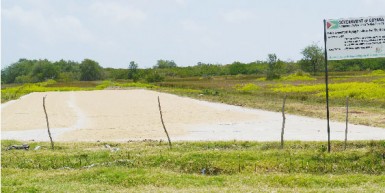
Vako does not just help to identify plant diseases when farmers take along samples, but he also recommends the right chemicals. The shop also stocks a variety of items including agricultural equipment, plant seeds and fertilizers as well as food for flowering plants for those who like to beautify their gardens.
A graduate from the University of Guyana, Vako said his calling is to “teach people.” He was happy that the village was progressing and said government was “building a koker to drain the land…” He noted that Bengal has its “fair share of life; it has its good and bad, like in every community.” Nevertheless, he recognized that there are “lots of resources and great potential in Bengal. For a little community, we do quite a lot.”
Sattie’s grandparents came from India and later migrated to the United States. Four families first settled in the village, namely the Pawaroos, the Rambrichs, the Davids and the Sukhnauths. Her grandmother was a Pawaroo. She said that “at one time this was a top village. The sad thing is that many residents have left their homes abandoned and it gives the village a depressed look.”
Coconut industry
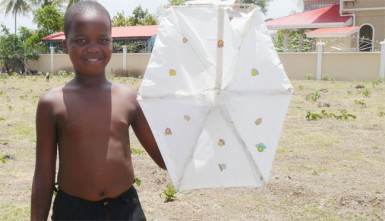
Bengal once had a thriving coconut estate which Sattie said is now a “sleeping giant.” She is still confident about the bright future of the coconut industry but said “we need more market; with an increased market the price can go up.”
“Government had looked at it [estate] and wanted to meet with the direct owners and give them fertilizer so that they can commit themselves to upkeep their farms,” she continued, “but most of the owners have migrated” and have rented out their farms.
Feeza Hamid’s father, Abdul Hamid was one of the persons who purchased coconuts from farmers around the Corentyne. He had gone with a truck to collect coconuts when this newspaper dropped in. “The farmers would pick the coconuts and do all the hard work,” she said.
He exports the nuts to a company in Trinidad that uses them to produce oil. He would also use the slightly rejected coconuts to produce copra that is sold locally. A worker was busy in a large bond extracting the nuts. These would be put to dry on a concrete floor at the back of his yard. Feeza said they had electrical dryers but they were damaged in a fire and they had to resort to the old method.
Her parents also operate the Abdul’s Halaal Meat Centre where they sell eggs and a variety of meat, including Creole and white chicken, duck, mutton and turkey.
Modern rice mill
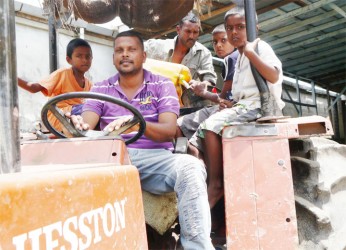
Rambrich, who produces the aromatic rice, is awaiting approval from the government before commencing the construction of the modern rice mill, gas station with supermarket, pharmacy and mini-mall opposite his home.
He would also be the holder of a chicken franchise. Persons have already indicated that they would like to open businesses like money transfer and a hardware store.
He is expecting all of this to be ready by the end of the year and said it would be a big boost for the Corentyne area. “Berbice is on the move for development, and better yet, if we find oil there would be even greater progress.”
Rambrich who has been serving as president of the Guyana Rice Producers’ Association (GRPA) since 1998, has made representations for farmers at all levels. Recently, he had to intervene when the police detained a combine for over two hours and prevented the farmer from reaping his paddy. The man did not have insurance for the machine but Rambrich said, “farmers don’t need to take out insurance because their machines are hardly on the road.” He had arranged a meeting with the commander of ‘B’ Division to discuss the matter so that “police can be more co-operative with farmers. In other countries farmers are treated better.”
Rambrich’s life as a rice farmer started when he was a youth and he had to assist his father with a 20-acre plot. He has grown to become one of the most successful rice farmers on the Corentyne, cultivating 750 acres of rice land.
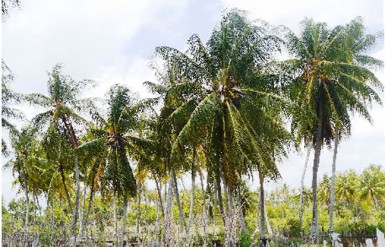
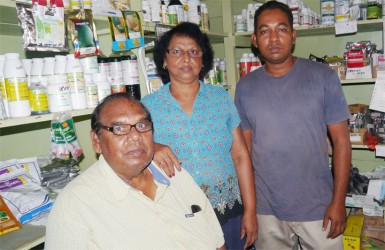
After completing his schooling at the No 43 Primary and then the Central Corentyne Secondary, he worked for two years in Georgetown at Toolsie Persaud, Ltd. He also “attended several local and international conferences, seminars on rice and field schools and I implemented whatever I learnt. I was also able to produce better paddy and more yield.”
He joined the GRPA in 1992 and represented Region Six at the central committee level. From 1989 he was appointed director of the Guyana Rice Development Board and has been a member of the research and extension board and the drainage and irrigation board. He had also served as president of the Rotary Club of Corriverton and has recently been appointed President of the Central Corentyne Chamber of Commerce for a second term.
In 1987 he got married to his wife, Rebecca, whom he described as the “backbone of everything,” having been supportive of him in his business. His three children ‒ Basdeo, 24, Christina, 22, and Anand, 18, have all been successful at the CXC level and have been pursuing studies at the University of Guyana.

